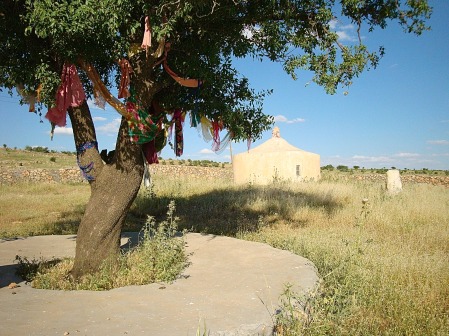At one time Turkey had a large minority population of Yezidis, mainly living in the far southeast. The mainly Kurdish Yezidis are often called devil worshippers although they are probably better thought of as descendants of duallist traditions (Manichaeans, Zoroastrians etc). As a religion Yezidism appears to have drawn on all sorts of traditions including Christianity, Islam and more shamanistic faiths.
They have many distinctive beliefs such as their reverence for peacocks and dislike of the colour blue. They hold water in particular reverence and don’t eat fish (or lettuce). They particularly revere the sun and turn towards it to pray five times a day. Their holy day is Wednesday. They hold a three-day fast in December and celebrate the New Year close to the spring equinox like other Kurds. Yezidi women don’t wear veils.
Yezidis believe that God placed the care of the world in the hands of seven angels of whom the most important is the Peacock Angel (Melektavuğı in Turkish), also known as Şaytan (Satan) whose name may not spoken by believers.
Today almost all the Yezidis have migrated either to Europe or to Northern Iraq where there is a major Yezidi shrine to Sheikh Adi ibn Musafir at Lalish near Shekhan. The sheikh (? – 1162) founded the Adawiyya sufi sect but came to be seen as a reincarnation of the Peacock Angel.
Of the less than 500 Yezidis believed to remain in Turkey most live in the Tur Abdin with perhaps a handful in İstanbul. The hamlet of Bacın (Güven) retains a circular Yezidi shrine although all the villagers seem to have left.


